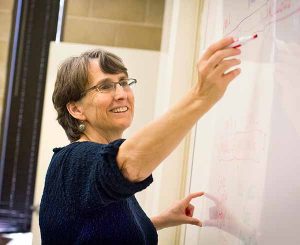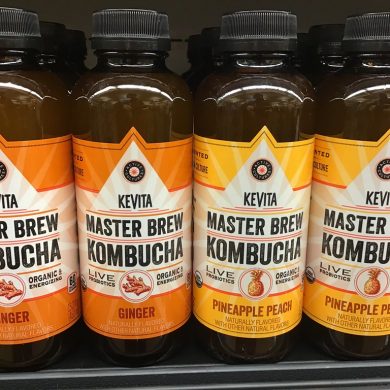By Sharada Saraf | SQ Online Reporter | SQ Online (2016-2017)
________________________________________________________________________________________
It’s Monday morning. You’re in your BILD 4 class, and it’s painfully obvious that it’s an 8 a.m., because the 300 students in the lecture hall are dead silent as the professor poses a question to the crowd. The person on your left is dutifully taking notes in her carbon copy notebook, and the person on your right is staring at the lecture slides, his eyes glazed over. He jolts as the professor announces, “Alright, let’s do a clicker question!” A chorus of groans and rustle of backpacks fills the air. Sound familiar?
The lower-division BILD series, a requirement among most biology majors, can, on one hand, be a source of passion for the subject, teaching major concepts like the cell, multicellular life, evolutionary biology, and basic lab techniques covered over the course of 4 classes. On the other hand, it can be a tedious course load for students who may feel both disconnected from the subject and anonymous in the giant lecture halls of 400+ students, many of whom take the course simply to fulfill prerequisites.
However, the challenges that come with being a student in a BILD class aren’t one-sided: being a professor of huge, introductory biology courses is no easy feat. Just ask Professor Stephanie Mel, who has taught BILD 1, 2, 3, and 4 intermittently over 10 years. She cites that a major challenge of teaching BILD classes filled with freshmen is how different the students’ backgrounds are when it comes to their previous education in biology.

“I think the main challenge, from the professor’s perspective [is] the fact that you have incredibly diverse set of backgrounds in a class like this. So, there are some students – in BILD 1, for example – who have never taken biology, at all…then there are other students, who took AP Biology, and…they’ve already basically taken the whole class and they know a lot of it already. So the challenge is to reach everybody: to reach students who don’t have any experience, then to make sure that you’re not sort of boring people who already know the material.”
Mel adds that finding the right balance of teaching and different kinds of problems to work on so that both groups of benefit is difficult, compounded by the issue of such a large class size: “How do you engage 400 people in a classroom, and how do you do it with giving enough information so that they can ask questions you can respond to in class?” Mel says. Student interaction in and out of the classroom, she says, is the best way for those with more experience to teach those who don’t have as strong of a base in the subject.
Additionally, a problem for many students is the daunting task of taking their first set of college-level biology courses. “In lower division classes, people are more afraid to speak up and ask questions.” Mel says. “I think that people are more nervous when they’re freshmen or sophomores. I find that far more people are more comfortable…in upper division biology classes.” The answer to tackling that fear? The one that every professor in every class you’ve taken insists on: “Office hours!” For good reason too: Mel emphasizes that going to office hours is one of the most important things that a biology student – and any student in general – can do.
“It’s also nice for the professors too, because when I am in a room with 400 people, and I am looking out at this mob of people, I like recognizing faces, and knowing that I recognize people who have come to office hours. It makes my job easier when I realize that people are there, interested and engaged. It’s a win-win situation.”
In addition, for all the freshmen who feel like they’re at the bottom of the figurative totem pole of college, Mel actually says that freshmen are one of her favorite parts of teaching the lower division series. “I love getting students excited!” she says. “It’s early on in their biology careers, and they just think ‘This is so cool! I can’t wait to take more classes, and I can’t wait to take what I’ve learned in this class and apply it to other classes’. In BILD 4, for example, they’re fresh out of high school, and we’re able to offer them this research experience…and offer them the tools to produce real data.”
So, the next time you’re trudging mournfully to your 8 a.m. BILD class, keep in mind that behind every lecture is a professor trying to build a solid foundation of biological knowledge to carry you through upper division university courses and beyond.
[youtube https://www.youtube.com/watch?v=RA078JXf6bQ&w=620&h=350]
Mel was recognized by the UC San Diego Chancellor’s Associates for excellence in undergraduate teaching during the 2017 Faculty Excellence Awards.
[hr gap=”10″]
